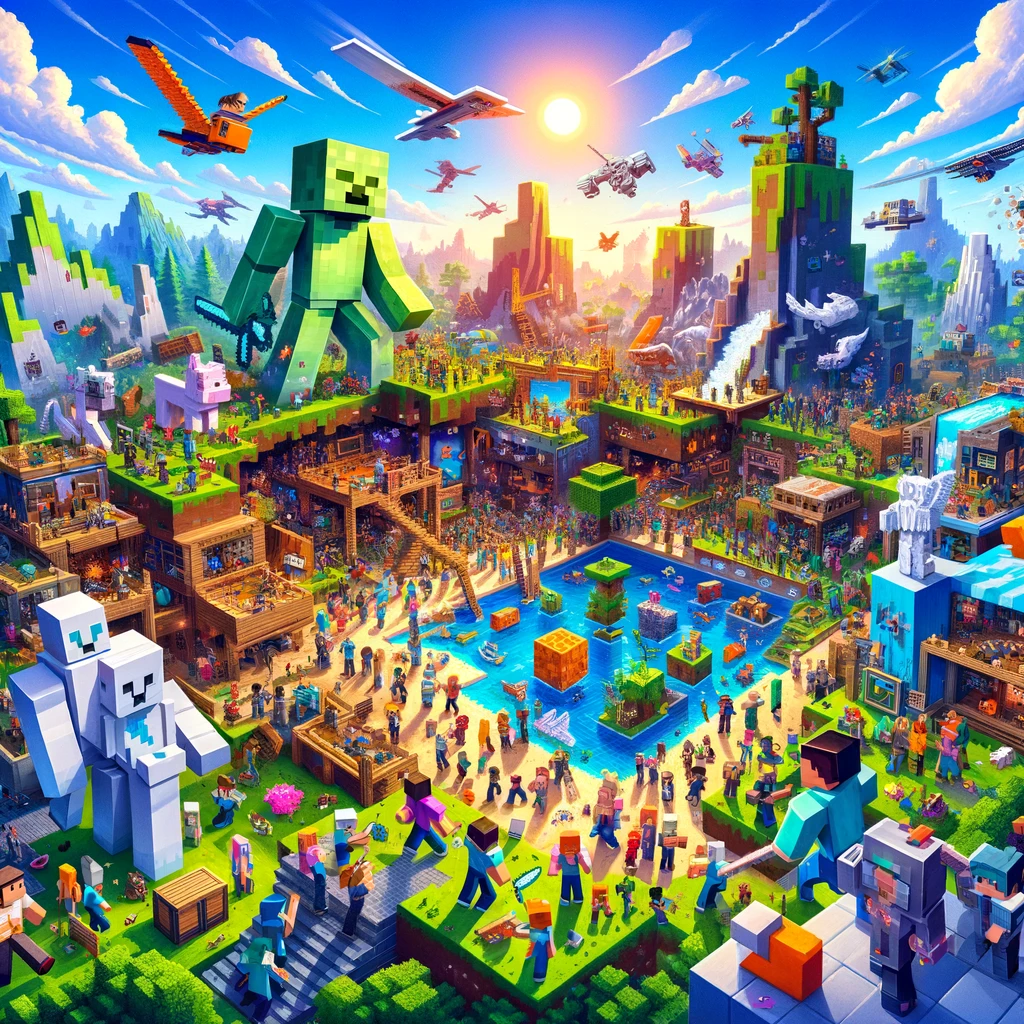
Minecraft, a revolutionary sandbox video game developed by the Swedish company Mojang, has become a cultural phenomenon since its inception. With the simple yet profound tagline, “Millions of crafters have smashed billions of blocks! Now you can join the fun!”, Minecraft transcends gaming, becoming a staple of digital creativity and community. This game, which started as a modest project, has grown into a global powerhouse, captivating millions of players who collectively have destroyed billions of blocks, each contributing to vast, expansive worlds limited only by their imaginations.
The essence of Minecraft lies in its simplicity. Players are dropped into a procedurally generated world made entirely of blocks that they can interact with, manipulate, and rearrange to create virtually anything they can imagine. From simple homes to grandiose castles, the game’s open-ended nature allows players to choose their own path, whether it’s exploring, building, or gathering resources. The game has various modes that cater to different types of players: Survival mode, where players must acquire resources and maintain their health and hunger; Creative mode, where players have unlimited resources and the ability to fly; and Adventure mode, designed for players to experience user-crafted custom maps and adventures.
Mojang, the game’s developer, was founded by Markus Persson, also known as “Notch.” Persson initially released Minecraft in May 2009 as a public alpha for PC, and after gradual updates, the full version was released in November 2011. The game’s development was driven by Persson’s vision of a Lego-like construction game that allowed for environmental manipulation and construction. Mojang has since evolved, continually updating the game with new features, blocks, and creatures, as well as fixing bugs and improving gameplay mechanics. This ongoing development is one of the reasons Minecraft has remained relevant in the gaming community.
The impact of Minecraft extends beyond just gaming. Educators have recognized Minecraft’s potential as a learning tool, incorporating the game into classrooms to teach subjects like mathematics, history, and computer programming. The game’s application, Minecraft: Education Edition, is specifically designed for classroom use, providing teachers and students with a fun, interactive way to learn and collaborate. This educational version includes various modifications to tailor the experience to educational needs, including secure multiplayer features and classroom-friendly controls.
Minecraft’s community is another pillar of its success. The game has spawned a massive online community across various platforms, including YouTube, Twitch, and Reddit. Content creators share gameplay videos, tutorials, and story-driven experiences in Minecraft, which helps to maintain the game’s popularity and engage the community. These creators have become influencers and educators in their own right, inspiring viewers with their creativity and mastery of the game’s mechanics.
Moreover, Minecraft’s modding community plays a significant role in its longevity and appeal. Mods (modifications) are user-created additions and changes to the game that can add new features, items, and mechanics. The modding community is prolific, with thousands of mods available that can transform game experiences, from simple additions of new blocks to complete overhauls of the game’s physics and gameplay. These mods keep the game fresh and continuously evolving, as players create new content that extends beyond Mojang’s official updates.
The game has also expanded into other media and merchandise, including books, toys, and apparel. Minecraft’s distinctive visual style, characterized by its blocky, pixelated graphics, is instantly recognizable, making the merchandise popular among fans. Additionally, the game has inspired other forms of media, including a narrative-driven spin-off, “Minecraft: Story Mode,” and plans for a feature film adaptation.
The development of mobile apps has further broadened Minecraft’s reach. The mobile version, Minecraft: Pocket Edition, allows players to engage with the game on their smartphones and tablets. This accessibility means players can take their crafting and exploration on the go, playing both in solo modes and with others in multiplayer settings. The apps have been crucial in expanding Minecraft’s audience, attracting a demographic that primarily accesses games through mobile devices.
In summary, Minecraft is more than just a game; it’s a platform for creativity, a teaching tool, a community builder, and a cultural icon. Its simple premise of breaking and placing blocks has built bridges across generations, provided educational value, fostered a robust community, and spurred creativity among millions of players. With continuous updates from Mojang and an ever-expanding suite of tools and features, Minecraft continues to grow, inviting more players to join in the fun and explore the limitless possibilities.
Digital illustration depicting the vibrant and creative world of Minecraft, highlighting a community engaged in building, exploring, and collaborating within the game’s unique environment.